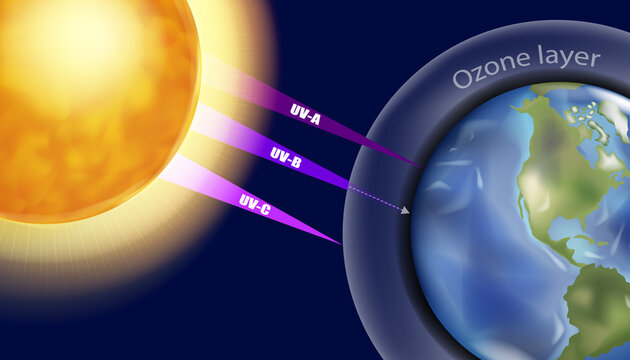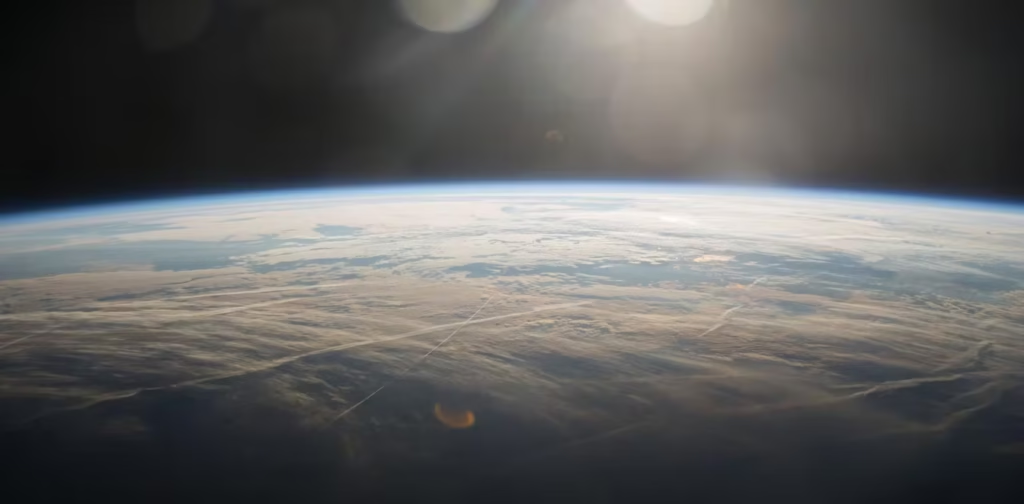
Introduction
The ozone layer plays a key role in protecting life on Earth by blocking harmful ultraviolet rays from the sun. Found high up in the stratosphere, about 10 to 30 kilometers above the ground, it prevents most UV-B and UV-C rays from reaching us. These rays can lead to skin cancer, eye cataracts, and harm to ecosystems. Scientists noticed over recent years that the ozone layer has thinned a lot in the form of what is now called the “ozone hole” above Antarctica.
The thinning of the ozone layer poses a major threat to human health, wildlife habitats, and the planet’s overall climate stability. This piece looks into the main reasons why the ozone layer is deteriorating focusing on human actions natural influences, and the hurdles in attempting to restore it.
1. Human Actions: A Leading Factor in Ozone Damage
A. Chlorofluorocarbons (CFCs) and Other Chemicals Damaging the Ozone
Man-made chemicals called ozone-depleting substances (ODS), play the biggest role in breaking down the ozone layer. Among them, chlorofluorocarbons (CFCs) were used in areas such as:
- Fridges and ACs (used as refrigerants)
- Spray cans (like deodorants or hair sprays)
- Foam-making chemicals (found in insulation and packaging)
- Solvents for industrial use
When CFCs enter the air, they can stay unchanged for many years. Over time, they rise to the stratosphere where UV light breaks them apart releasing chlorine atoms. One chlorine atom can break down thousands of ozone molecules before it becomes inactive.
Other dangerous ODS include:
- Halons (found in fire extinguishers)
- Carbon tetrachloride (used as an industrial solvent)
- Methyl chloroform (applied in cleaning tasks)
- Hydrochlorofluorocarbons (HCFCs) (not as bad as CFCs but still harmful)
B. How the Montreal Protocol Helps
Seeing the serious danger from CFCs, countries worldwide came together to create the Montreal Protocol in 1987. This agreement aimed to phase out harmful substances that damage the ozone layer. Because of this pact, CFC production dropped a lot, and the ozone layer started recovering. Yet illegal emissions of CFCs still happen slowing down full recovery.
2. Natural Causes of Ozone Layer Weakness
Human actions are the main reason for ozone depletion, but nature also plays a part:
A. Polar Stratospheric Clouds (PSCs)
In the cold polar regions like Antarctica very low temperatures create polar stratospheric clouds (PSCs). These clouds let chemical reactions happen that turn inactive chlorine from CFCs into compounds that destroy ozone. This process is why the ozone hole is at its worst above Antarctica.
B. Volcanic Eruptions
Volcanic eruptions send out sulfur dioxide (SO₂) into the stratosphere, which then changes into sulfate aerosols. These aerosols allow chlorine and bromine reactions to speed up ozone destruction. A clear example is the 1991 eruption of Mount Pinatubo, which caused a temporary increase in ozone loss.
C. Solar Activity and How It Affects Atmospheric Dynamics
Solar radiation and wind movement in the atmosphere play a role in changing ozone levels. UV rays from the sun break apart ozone molecules. Shifts in solar cycles and winds in the stratosphere, like the polar vortex, can make ozone loss worse in certain areas.
3. Challenges That Slow Ozone Layer Recovery
Even though the Montreal Protocol has been successful, some issues still block the ozone layer from healing:
A. Ongoing Use of Specific Ozone-Harming Chemicals
Most CFCs are no longer in use, but chemicals like HCFCs (temporary replacements) and nitrous oxide (N₂O) (linked to farming and industry) continue to harm the ozone layer.
B. How Climate Change Ties In
Global warming influences ozone recovery in ways that aren’t so straightforward:
- Greenhouse gases cool the stratosphere and this could stretch out the formation of PSCs slowing down ozone recovery.
- Shifting wind patterns might move ozone around making certain areas thinner.
C. Illegal CFC Activity
Even with bans in place, some nations continue making or sneaking in CFCs. There’s been recent evidence of unexpected emissions of CFC-11 painting a troubling picture.
D. Slower Recovery Timeline
Even with fewer emissions of ODS, chlorine and bromine stay in the stratosphere for many decades. Experts believe the ozone layer might not heal until somewhere in the mid to late 21st century.
4. Effects of a Thin Ozone Layer
A weaker ozone layer carries some serious effects:
A. More UV Exposure
- Increased cases of skin cancer like melanoma
- Damage to eyes such as cataracts
- Vulnerability in immune systems
B. Damage to Ecosystems
- Lower productivity in phytoplankton (hurts marine food webs)
- Harmed crops and smaller harvests
- Changes in land and water ecosystems
C. How Climate is Affected
- Shifts in how air moves in the atmosphere
- Changes in how temperatures are distributed worldwide
5. How Can We Protect the Ozone Layer?
A. Making the Montreal Protocol Stronger
- Pushing tougher rules against making CFCs
- Speeding up how fast HCFCs are replaced
B. Encouraging Alternatives to Harmful Ozone Substances
- Using hydrofluorocarbons (HFCs), which avoid harming the ozone layer but may lead to global warming
- Working on natural refrigerants, like systems using ammonia or CO₂
C. Raising Awareness and Promoting Policies
- Encouraging the use of greener products
- Pushing governments to adopt stricter environmental rules
Final Thoughts
The ozone layer’s thinning stands out as a major environmental concern. Human-made chemicals like CFCs play a big role in this problem. The Montreal Protocol has helped cut down on substances that harm the ozone, but issues like climate change illegal CFC use, and slow progress in repair still exist. To protect the ozone layer, the world needs to work together, create tougher rules, and find better options to replace dangerous chemicals. By acting as a global community, people can help this essential shield heal and protect future generations from the risks of stronger UV rays.
Final Thoughts
The thinning of the ozone layer shows how human actions can upset the planet’s natural systems. At the same time, it proves that working together and relying on science-backed policies has the power to fix environmental harm. The ozone layer’s recovery is a positive example, but staying alert and dedicated matters to bring it back .
